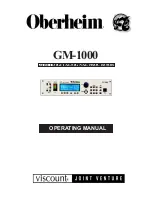
17
TECHNICAL DATA
The motor in your food processor operates on
standard line operating current. The appropriate
voltage and frequency for your machine are
shown on a label on the bottom of the base.
An automatic, temperature-controlled circuit
breaker in the motor ensures complete
protection against motor burnout. If the
processor runs for an exceptionally long time
when chopping, mixing or kneading a thick or
heavy mixture in successive batches, the motor
may overheat. If this happens, the processor will
stop. Turn it off and wait for the motor to cool
before proceeding. It will usually cool within 10
minutes. In extreme cases, it could take up to
an hour. Safety switches prevent the machine
from operating when the work bowl or the cover
is not locked into position. The motor stops
within seconds when the motor is turned off;
and when the pusher assembly is removed, a
fast-stop circuit also enables the motor to stop
within seconds.
Cuisinart offers a Limited Three-Year Warranty
on the entire machine.
TROUBLESHOOTING
Food Processing
1.
Problem:
The food is unevenly processed.
Solution:
• The ingredients should be cut evenly
into ½- to 1-inch pieces before
processing.
• Process in batches to avoid
overloading.
2.
Problem:
Slices are uneven or slanted.
Solution:
• Place evenly cut food into the feed tube.
• Apply even pressure on the pusher.
3.
Problem:
Food falls over in feed tube.
Solution:
• Large feed tube must be packed full
for best results. If processing smaller
quantities, use the small feed tube.
4.
Problem:
Some food remains on top
of the disc.
Solution:
• It is normal for small pieces to remain;
cut remaining bits by hand and add to
processed ingredients.
Dough Processing
1.
Problem:
Motor slows down.
Solution:
• Amount of dough may exceed maximum
capacity of your food processor. Remove
half and process in two batches.
• Dough may be too wet (see number 9).
If motor speeds up, continue processing.
If not, add more flour, 1 tablespoon at a
time, until the motor speeds up. Process
until dough cleans the sides of the work
bowl.
2.
Problem:
Blade doesn’t incorporate
ingredients.
Solution:
• Always start the food processor before
adding liquid. Add liquid in a slow, steady
stream, allowing the dry ingredients to
absorb it. If too much liquid is added,
wait until ingredients in the work bowl
have mixed, then add remaining liquid
slowly (do not turn off the machine). Pour
liquid onto dough as it passes under feed
tube opening; do not pour liquid directly
onto bottom of the work bowl.
3.
Problem:
Blade rises in work bowl.
Solution:
• Blade may not have been pushed down
into the lock position before starting the
process.
• Excessively sticky dough can cause blade
to rise. Reinsert blade and immediately
add 2 tablespoons of flour through the
feed tube while the machine is running.
4.
Problem:
The large pusher moves when
processing dough or other heavy loads.
Solution:
• The pusher lock feature, located above
the handle, should be pulled out (some
vibration is normal).
5.
Problem:
Dough doesn’t clean inside of
the work bowl.
Solution:
• Amount of dough may exceed maximum
capacity of your food processor. Remove
half and process in two batches.
• Dough may be too dry (see number 8).
• Dough may be too wet (see number 9).
6.
Problem:
Nub of dough forms on top of
blade and does not become uniformly
kneaded.
Solution:
• Stop machine, carefully remove dough,
divide it into 3 pieces and redistribute
them evenly in the work bowl.
7.
Problem:
Dough feels tough after
kneading.
















































